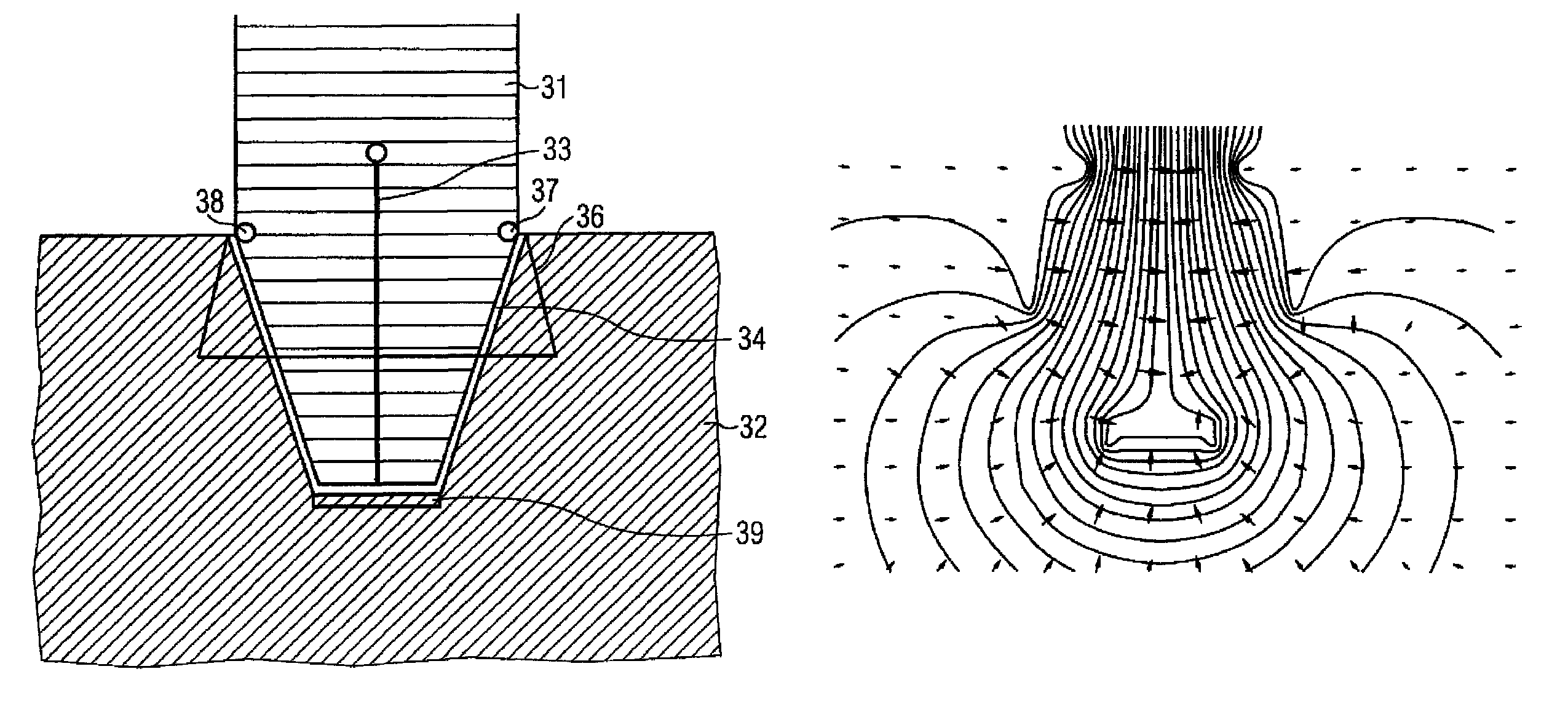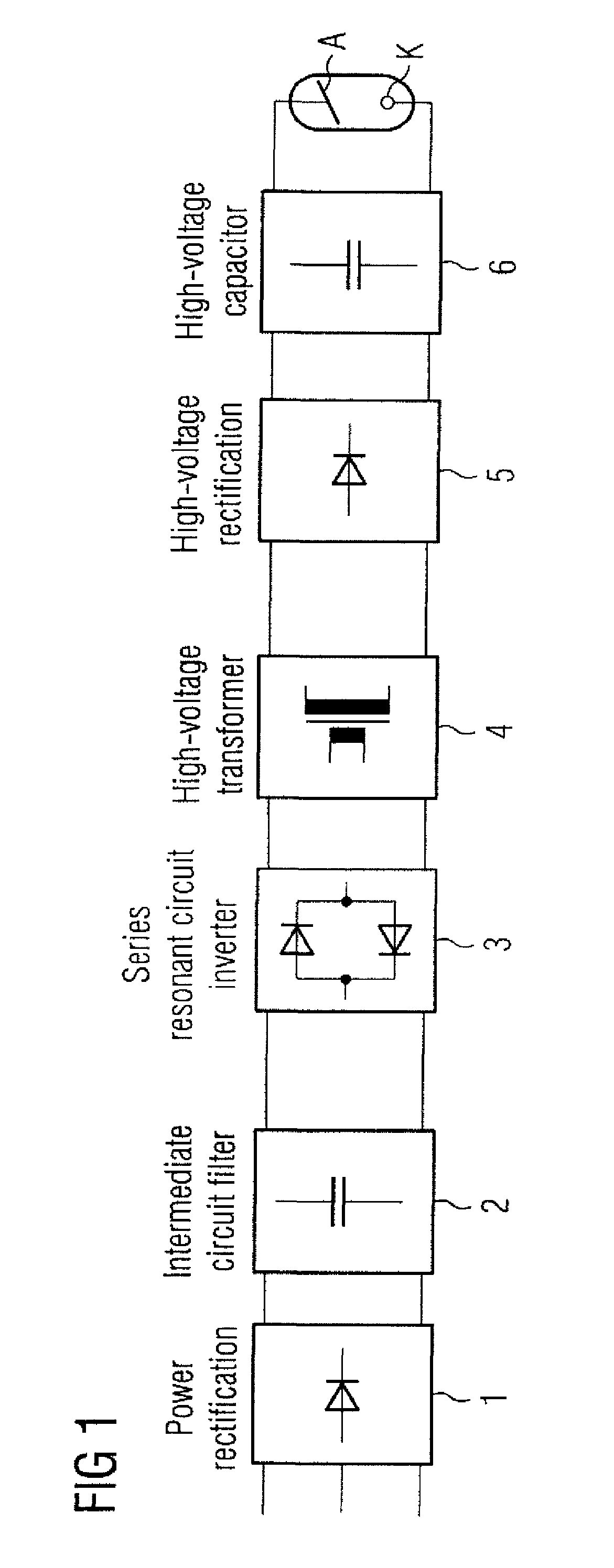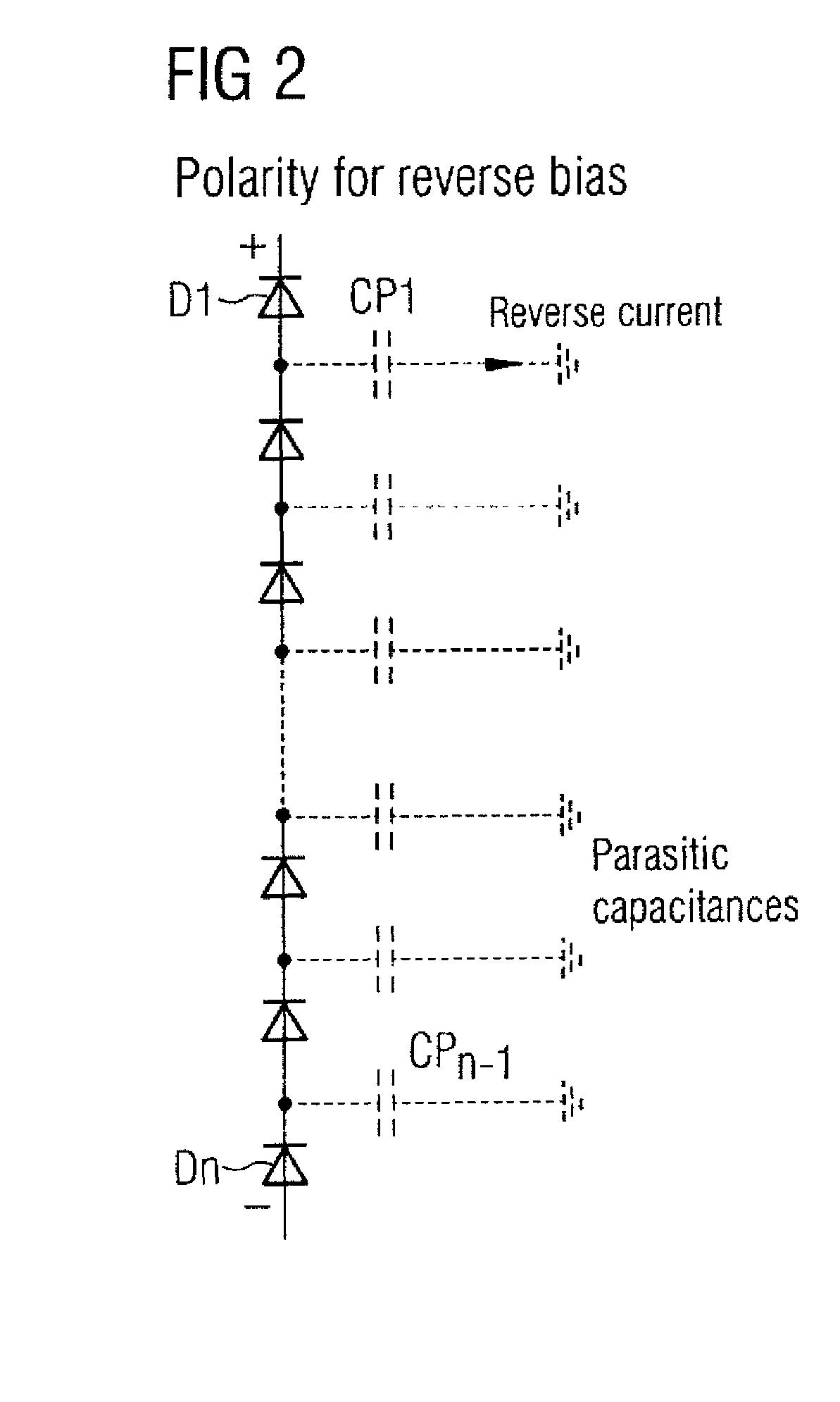Potential control for high-voltage devices
a high-voltage device and potential control technology, applied in the direction of transmission, electrical equipment, line-transmission, etc., can solve the problems of increasing the load on the switching elements used, and achieve the effect of improving fault resilience and operation
- Summary
- Abstract
- Description
- Claims
- Application Information
AI Technical Summary
Benefits of technology
Problems solved by technology
Method used
Image
Examples
Embodiment Construction
[0021]FIG. 1 shows a schematic circuit diagram of an X-ray generator implemented in inverter technology. The voltage applied to the X-ray tube 7 between anode A and cathode K is a direct-current voltage. The direct-current voltage may be obtained by a power rectifier 1 and an intermediate circuit filter 2. The direct-current voltage may be converted into an alternating-current voltage by a series resonant circuit inverter 3. The alternating-current voltage may be transformed by a high-voltage transformer 4 into a high voltage, which is converted into a direct-current voltage, for the X-ray tube 7 by a high-voltage rectifier 5 and filtered by a high-voltage capacitor 6.
[0022]The high voltage at the X-ray tube 7 may be 75 kV and more relative to ground or reference potential. As shown in FIG. 2, the high-voltage rectifier 6 is assembled from an array of commercially available high-voltage diodes connected in series. FIG. 2 illustrates a diode chain (diodes D1 . . . Dn) of a high-volta...
PUM
 Login to View More
Login to View More Abstract
Description
Claims
Application Information
 Login to View More
Login to View More - R&D
- Intellectual Property
- Life Sciences
- Materials
- Tech Scout
- Unparalleled Data Quality
- Higher Quality Content
- 60% Fewer Hallucinations
Browse by: Latest US Patents, China's latest patents, Technical Efficacy Thesaurus, Application Domain, Technology Topic, Popular Technical Reports.
© 2025 PatSnap. All rights reserved.Legal|Privacy policy|Modern Slavery Act Transparency Statement|Sitemap|About US| Contact US: help@patsnap.com



